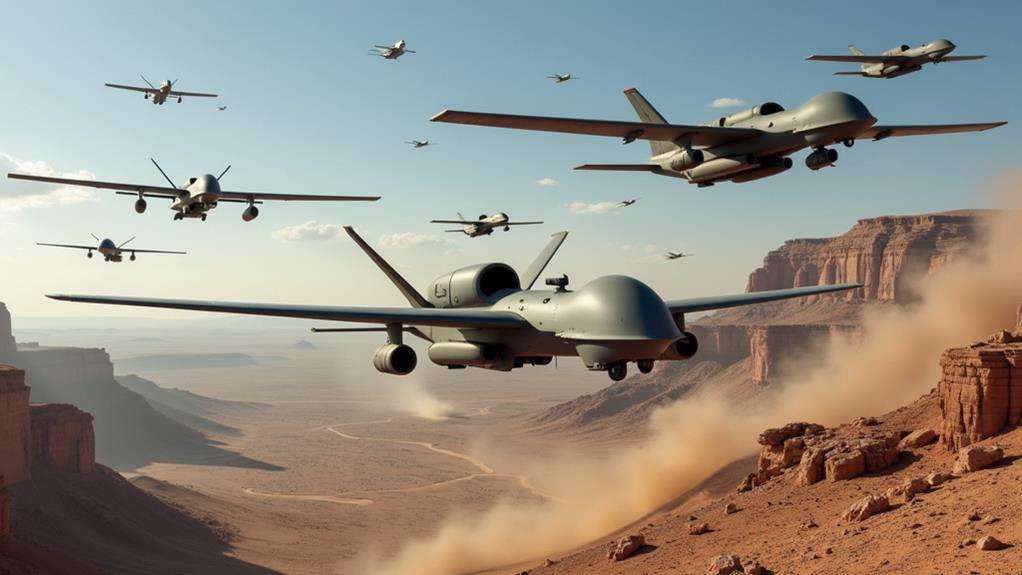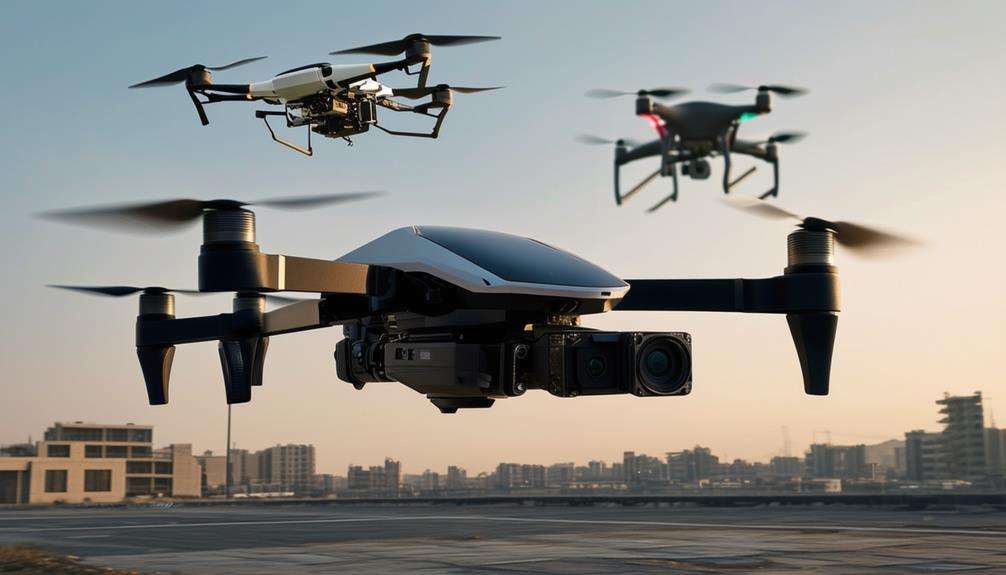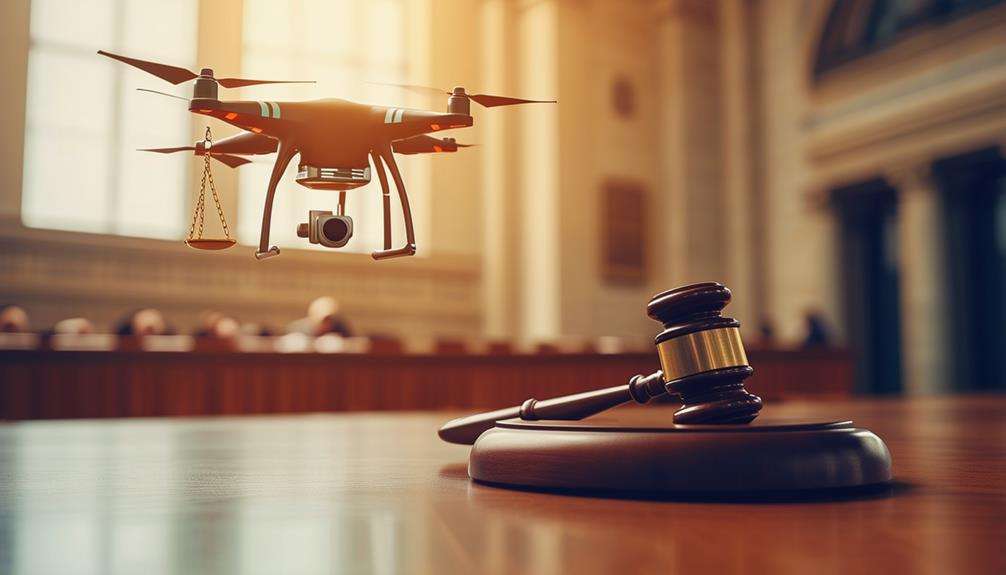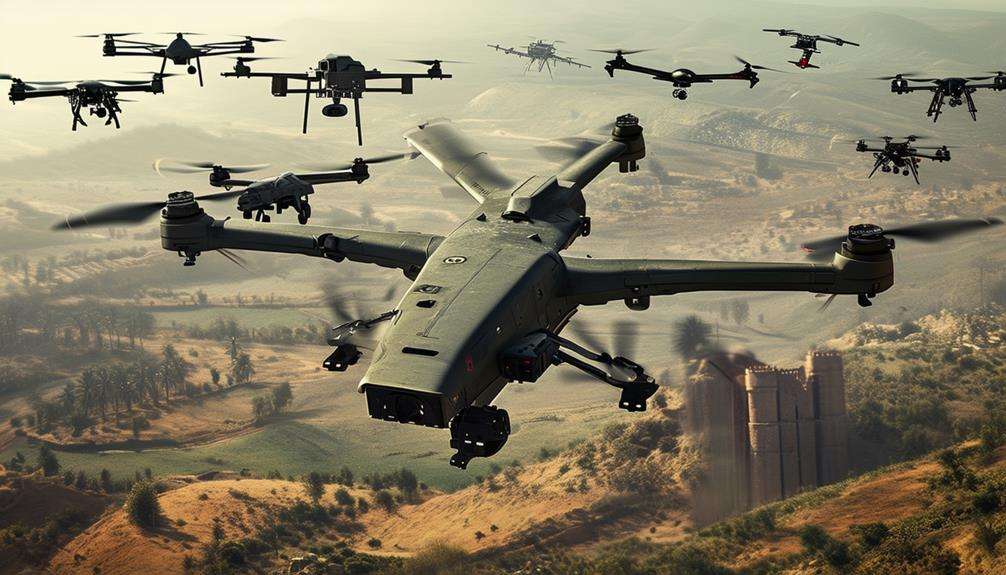Military Drones: Their Development and Historical Impact
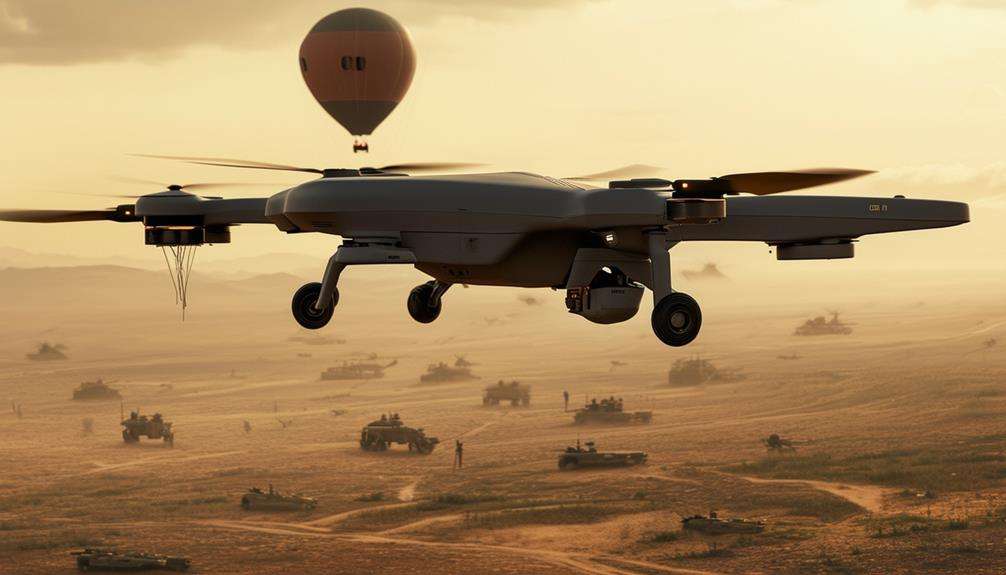
The evolution of military drones spans back to the 19th century, beginning with early concepts like balloon bombs. These primitive innovations laid the groundwork for today's sophisticated UAVs, such as the Predator and Reaper.
These advancements have significantly transformed modern warfare by reducing human risk and enabling precise strikes. Understanding the progression from rudimentary radio-controlled crafts to today's high-tech drones offers valuable insights into the future of military strategy. This history not only showcases a lineage of technological innovation but also highlights the strategic shifts in modern combat.
Early Innovations
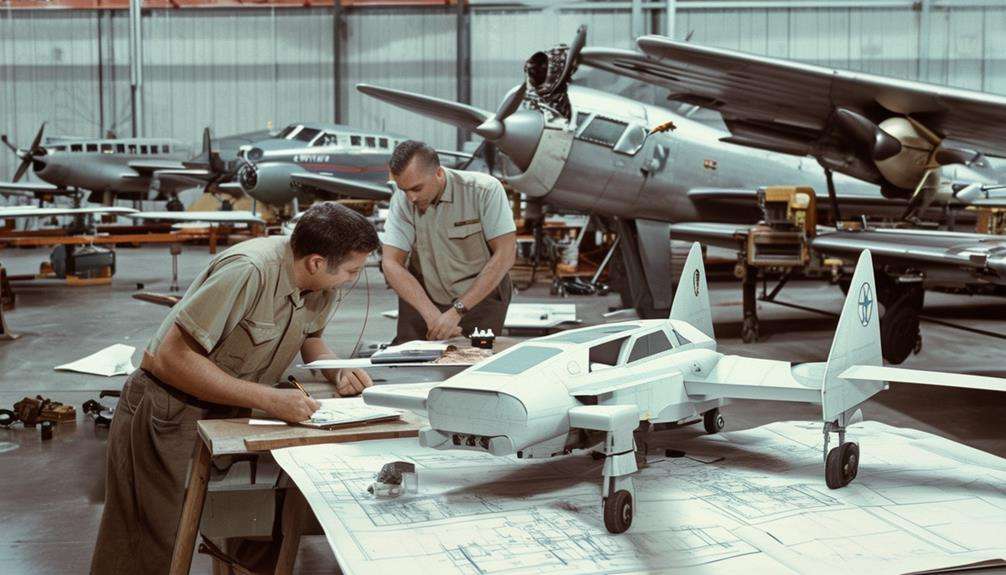
Early innovations in military drones began as early as 1849 with the deployment of balloon bombs, which laid the groundwork for future developments in unmanned aerial vehicles (UAVs). Fast forward to 1898, Nikola Tesla demonstrated a pioneering radio-controlled craft, a breakthrough that significantly impacted UAV technology and marked a pivotal step in its evolution.
In 1935, the British developed the De Havilland DH.82B Queen Bee, often regarded as the first modern drone. This radio-controlled aircraft was primarily used for military target practice, showcasing the increasing sophistication of UAVs.
In the United States, actor and inventor Reginald Denny made a notable contribution in 1941 with the invention of the Radioplane OQ-2. This device was also employed for military target practice, emphasizing the rapid adoption and adaptation of UAV technology by different nations.
Additionally, the US Navy developed the Curtiss N2C-2 in 1937, a radio-controlled UAV torpedo, illustrating the diverse applications of early drones. These early innovations collectively set the stage for the advanced military drones we see today, marking significant milestones in UAV history.
World War Era Advancements
During the World War era, military drones underwent significant advancements that fundamentally reshaped warfare strategies and capabilities. In World War I, Charles Kettering invented the Kettering Bug in 1917, marking the initial use of UAV technology. This early drone acted as a torpedo, showcasing the potential of unmanned systems in offensive operations.
In World War II, actor Reginald Denny created the Radio Plane in 1941. Initially designed for military target practice, it significantly advanced drone technology, highlighting the growing importance of UAVs in training and operational scenarios.
Post-World War II developments included the RQ-2 Pioneer Drone, created in 1986 by the US and Israel, marking a milestone in battlefield UAV advancements. By the Gulf War in 1991, drones were flying 24/7, proving indispensable in modern warfare operations.
The Predator drone, introduced in 1996, further revolutionized military strategies with its weaponized capabilities. This UAV set the stage for a new era of combat, demonstrating how drones could reshape the future of warfare. Each of these advancements laid the groundwork for the sophisticated UAVs used in present-day conflicts.
Cold War Developments
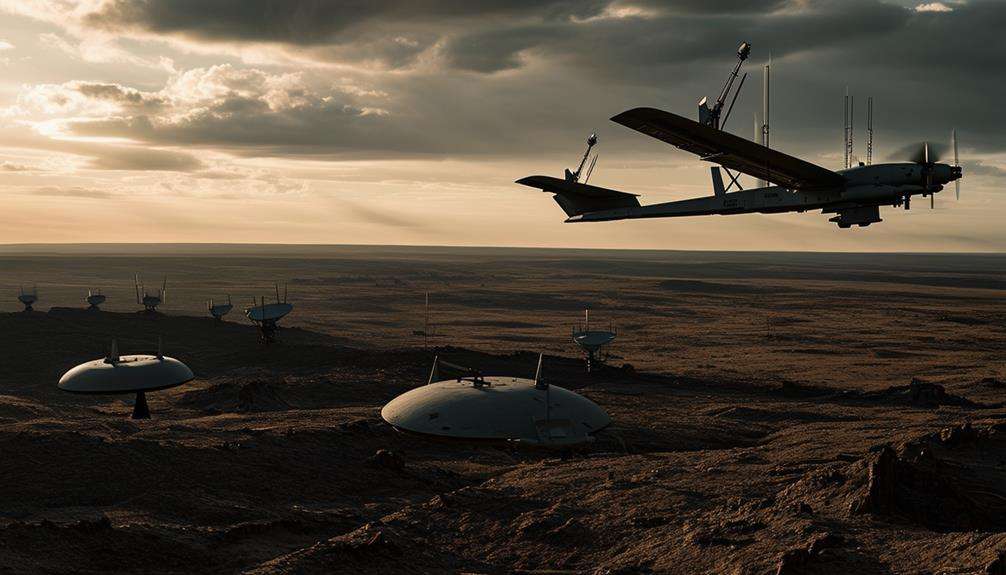
As the world entered the Cold War period, the urgency to advance drone technology grew in response to escalating geopolitical tensions. The U.S. military intensified the development of radio-controlled military drones following the Soviet Union's downing of a U.S. spy plane. This incident underscored the need for safer reconnaissance methods, driving the U.S. Air Force to invest heavily in drone development during the 1980s and 90s.
During the Vietnam War, classified missions involving drones demonstrated their strategic importance. These early drones allowed the U.S. to gather critical intelligence without risking pilot lives. The use of drones in the Vietnam War marked a significant turning point, proving their value in high-stakes situations.
The strategic importance of drones continued to evolve throughout the Cold War. The U.S. and Israel utilized drones during the Yom Kippur War, further showcasing their capabilities in military operations.
Fast forward to modern times, the development and deployment of the Predator and Reaper drones, particularly the MQ-9 Reaper, have roots tracing back to Cold War advancements. These drones have become vital tools for the U.S. Air Force, reflecting the long-term impact of Cold War-era drone development on current military strategies.
Modern Battlefield Integration
The integration of military drones has fundamentally transformed modern warfare, revolutionizing how armed forces conduct operations. Advances in drone technology have made unmanned aircraft pivotal in various military roles, including reconnaissance, precision strikes, and target simulation. These capabilities enable rapid and informed decision-making, thereby enhancing military strategy.
Drones provide continuous surveillance, delivering real-time data crucial for mission planning and execution. Equipped with precision strike capabilities, combat drones can neutralize threats while minimizing risks to military personnel. For example, the U.S. military relies heavily on drones, with approximately one-third of its fleet consisting of unmanned aircraft.
Key benefits of integrating military drones include:
- Persistent Surveillance: Continuous monitoring and intelligence gathering.
- Precision Strikes: Accurate targeting with minimal collateral damage.
- Reduced Risks: Lower exposure for human soldiers in dangerous operations.
- Enhanced Decision-Making: Real-time data for strategic planning.
In conflict zones, drone campaigns have often proven more effective than traditional military operations. The impact of military drones on modern warfare is significant, reshaping how conflicts are managed and resolved.
Future Military Applications
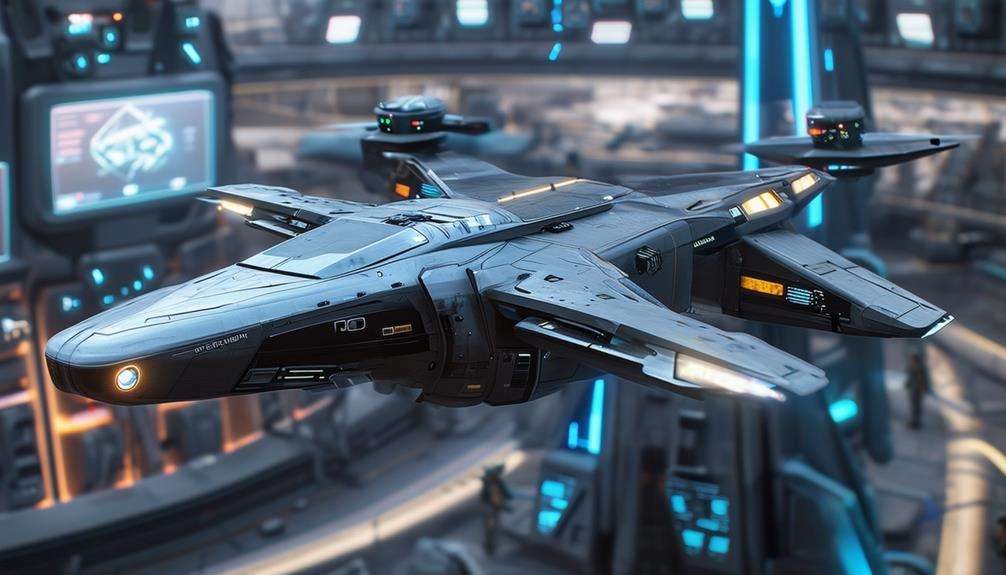
Envisioning future military applications, drones are set to harness advanced technologies like autonomy and artificial intelligence to redefine warfare. These drones will operate with minimal human intervention, thanks to sophisticated AI systems, allowing them to execute complex military operations with precision.
Swarm technology will enable multiple drones to coordinate seamlessly, creating powerful collective forces capable of overwhelming defenses. Future military drones will excel not only in firepower but also in electronic warfare and cyber operations, disrupting enemy communications and networks. Intelligence gathering will reach new heights with advanced sensors and machine learning algorithms, providing real-time insights and enhancing decision-making.
Predictive analytics will play a critical role, enabling drones to anticipate threats and adapt rapidly. Enhanced stealth capabilities and longer endurance will ensure these drones can operate undetected for extended periods. Improved communication systems will facilitate flawless coordination among units, making military strategies more effective.
Logistics support will also improve, with drones delivering supplies swiftly and efficiently. Anti-drone defense systems will become necessary as adversaries employ similar technologies. As these capabilities evolve, military drones will become indispensable assets in future conflicts, revolutionizing warfare.
Conclusion
Military drones have evolved from early implementations like balloon bombs to sophisticated systems such as the Predator and Reaper. These advancements have significantly transformed warfare by providing enhanced surveillance capabilities and precision strike options while minimizing human risk.
Looking forward, military drones are expected to become even more advanced, incorporating autonomous functionalities and swarm technology to further revolutionize intelligence gathering and conflict management. The future of military drones holds immense potential, marking just the beginning of their impact on modern warfare.

